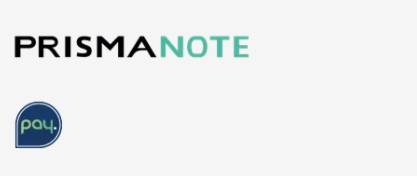How do you use forecasting tools for better inventory planning?
How to use forecasting tools for better inventory planning
What are forecasting tools?
Forecasting tools are powerful aids primarily used in the jewelry industry to accurately predict product demand. These tools analyze historical data and market trends to forecast future sales. By utilizing advanced algorithms and statistical models, jewelers can ensure that they always have the right amount of inventory at the right time.
For example, if you are a jeweler selling diamond rings, a forecasting tool can help you understand which rings sell best in certain seasons, such as during the holidays. This can save you a lot of waste of inventory and loss of revenue.
Pro tip: Start by collecting data on your past sales. The more accurate your data, the better your forecasting tool will be at predicting future demand.Why are forecasting tools essential for jewelers?
The jewelry industry is dynamic and subject to changes in market trends and consumer behavior. Forecasting tools provide jewelers with the insights needed to respond promptly to these changes. By managing your inventory efficiently, you can not only save costs but also make your customers happier with the right products at the right time.
Moreover, forecasting tools can help clarify the impact of external factors, such as economic fluctuations or seasonal demand. This enables you to develop a more strategic approach to your inventory planning.
Pro tip: Analyze monthly and seasonal sales data. This will help you identify patterns and better prepare your inventory.Types of forecasting tools
There are various types of forecasting tools available that can assist jewelers in managing their inventory. Each of these tools has its own advantages and disadvantages.
Quantitative forecasting tools
Quantitative forecasting tools use statistical analyses and mathematical models to predict future sales. These tools are particularly effective if you have data from previous sales and can accurately capture trends.
Qualitative forecasting tools
Qualitative forecasting tools rely on the opinions and experiences of experts within the industry. This can be valuable, especially in situations where historical data is limited or unavailable.
Hybrid forecasting tools
Hybrid forecasting tools combine both quantitative and qualitative methods, providing a broader perspective on market demand. This can give jewelers a more comprehensive and accurate prediction.
Pro tip: Experiment with different types of forecasting tools and combine them to achieve the best results for your specific situation.Steps for implementing forecasting tools
Implementing forecasting tools can be overwhelming, but if you approach it step by step, it becomes a manageable process. Here are some key steps you should follow.
Step 1: Identify your needs
Before choosing a forecasting tool, it is important to determine what specific needs you have. Do you need a tool that focuses on seasonal demand, or do you need long-term forecasts? This helps you to choose the right option.
Step 2: Gather historical data
The quality of your input data is crucial for the effectiveness of any forecasting tool. Make sure your historical sales data is well organized. This includes pricing, promotional activities, and other factors that influence demand.
Step 3: Choose the right tool
There are many different forecasting tools available on the market. Look at reviews and compare functionalities before making a decision. Pay particular attention to usability and integration with your existing systems.
Step 4: Train your team
Your team must understand how to use the forecasting tool effectively. Provide training so they can make optimal use of the tool to support inventory decisions.
Step 5: Monitor and evaluate
The implementation of a forecasting tool is just the beginning. Regularly monitor the performance of the tool and evaluate whether it helps improve your inventory management. Adjust your strategy as needed.
Pro tip: Don’t forget to ask for feedback from your team. This can help you better tailor the tool to the needs of your business.The benefits of forecasting tools
Using forecasting tools can bring various benefits to jewelers. These tools not only help optimize inventory levels but also contribute to the overall business strategy.
Better inventory management
With accurate forecasts, you can manage your inventory better. This means that you always have enough stock without accumulating excess inventory, leading to less product obsolescence.
Improved customer service
By using forecasting tools, you never have to disappoint your customers. With the right products at the right time, you can increase customer satisfaction and build trust.
Cost savings
Efficient inventory management not only prevents revenue loss from unsold products but also reduces storage and distribution costs.
Pro tip: Use forecasting tools not only for predicting regular demand but also for special occasions such as promotions and holidays.Common mistakes when using forecasting tools
On the other hand, there are also common mistakes that jewelers can make when using forecasting tools. This can lead to inaccurate predictions and inventory issues.
Insufficient data input
One of the most common mistakes is not entering data correctly into the forecasting tool. Ensure your data is complete and accurate.
Too much reliance on historical data
It’s easy to place too much trust in historical data without considering current trends or market factors. Stay informed about changes in the market.
No evaluation of results
Some jewelers forget to evaluate their results after using a forecasting tool. Regularly checking the effectiveness of your predictions is crucial.
Pro tip: Establish a feedback loop in which your team collects data and experiences regarding the accuracy of the forecasting tools.Conclusion
Using forecasting tools is essential for jewelers who want to optimize their inventory planning . By applying accurate and data-driven predictions, jewelers can not only improve their operational efficiency but also enhance customer satisfaction. Remember that it is the combination of the right tools, accurate data, and a well-trained team that determines the success of your inventory management.
So, what are you waiting for? Dive into the world of forecasting tools and discover how you can elevate your jewelry business to the next level!

Take your store to the next level
Start automating and digitizing your store processes today. PrismaNote helps retailers with this. Discover what we can do for you via the menu above.
- George



















































